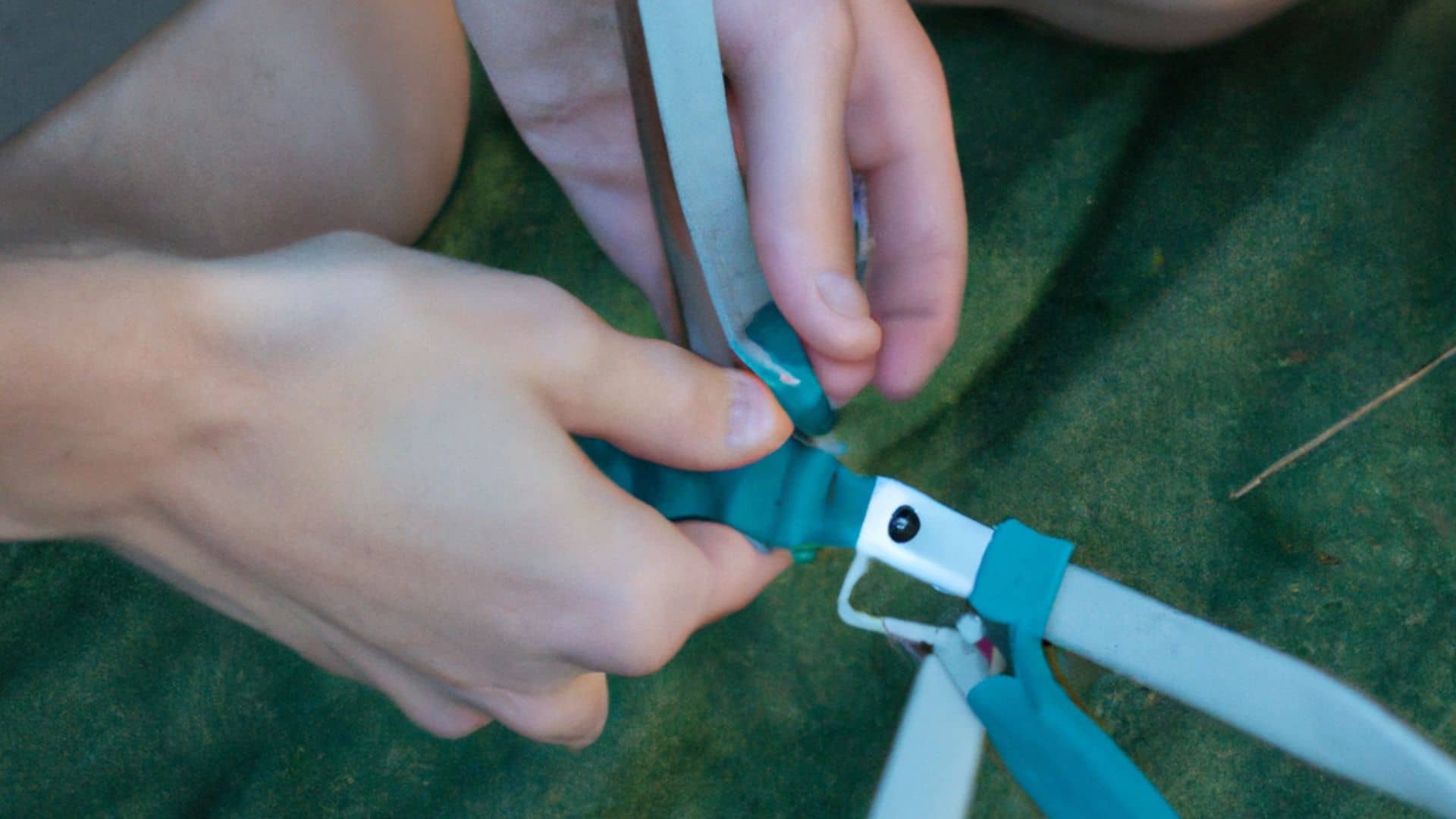If you’re planning on spending any time relaxing in a hammock, it’s important to know how to tie the straps correctly. Hammock straps are usually made from either rope or webbing, and both can be adjusted to the perfect length for your needs. There are a few different ways to tie hammock straps, but the most common and strongest method is known as the whoopie sling.
This guide will show you how to tie hammock straps using the whoopie sling method so that you can enjoy your hammock worry-free.
- Attach one end of the hammock strap to the loop at the end of the hammock
- Wrap the strap around a nearby tree or pole, and thread it through the loop at the other end of the strap
- Pull on both ends of the strap to tighten it around the tree or pole
- The tighter you pull, the more secure your hammock will be
- Tie a knot in each end of the strap to keep it from slipping loose
How to Use Hammock Straps (Setting up a Hammock) Quick and Easy
How Do You Use a Loop on a Hammock Strap?
There are a few different ways that you can use a loop on a hammock strap. The most common way is to create a loop around the tree or other support that you are using to hold up your hammock. This will allow you to adjust the height of your hammock easily and also provide more stability.
Another way to use a loop is to create an overhand knot in the middle of the strap. This can be used to adjust the length of the strap or to create a place to attach another piece of gear.
How Do You Tie a Hammock End?
When it comes to tying a hammock end, there are a few different ways that you can go about doing it. The most important thing is to make sure that the knots are secure and will not come undone easily. With that said, here are a few different ways that you can tie a hammock end:
The first way is to take the rope and make a loop around the tree trunk. Once you have done this, you will then need to thread the other end of the rope through the loop. Afterward, you will need to pull on both ends of the rope until it is tight.
Next, take one of the ends of the rope and tie it off in a knot. Finally, do the same with the other end of the rope.
The second way is similar to the first way, except instead of making a loop around the tree trunk, you will need to make a loop around one of the rungs on your hammock stand.
Once again, after you have made your loop, thread the other end of the rope through it and pull on both ends until it is tight.
How Do You Tie a Hammock Straps Wise Owl?
There are a variety of ways to tie hammock straps, but the “Wise Owl” method is one of the most popular. This method gets its name from the way the straps are tied in a loop around the trees, resembling an owl’s head and wings. Here’s how to do it:
1. Start by wrapping the strap around one tree trunk at about waist height. Make sure the loop is big enough to comfortably fit your hammock.
2. Take the other end of the strap and wrap it around a second tree trunk, also at waist height. Again, make sure the loop is big enough for your hammock.
3. Cross the two ends of the strap in front of you and thread them through the first loop (around Tree #1).
4. Pull on both ends of the strap until snug, then tie a square knot or another type of knot that you know is secure.
How High Should Hammock Straps Be?
How high should hammock straps be?
This is a great question and one that we get a lot! The answer really depends on how you want to use your hammock and what type of setup you have.
If you are using your hammock for camping, then you will want to make sure that the straps are high enough so that you can clear any obstacles in your campsite. For example, if there are trees nearby, you will want to make sure that the straps are high enough so that they won’t rub against the bark of the tree. If you are using your hammock at home, then the height of the straps is really up to you!
You can adjust them according to how low or high you would like your hammock to be.
As a general rule of thumb, we recommend that Hammock Straps be hung between 9-12 feet off the ground (measured from the center point of each strap). This gives plenty of room for most people to get in and out of their hammocks with ease.
Of course, if you are taller or shorter than average, you may need to adjust the height accordingly.
Keep in mind that the higher up you hang your Hammock Straps, the more angled your Hammock will be. This means that if you hang your Hammock too high, it might not be as comfortable as it could be.
Conversely, if you hang it too low, it might sag more than desired. We recommend finding a happy medium between comfort and sagging – usually around shoulder-height when lying down in the Hammock – and adjusting from there until it feels just right!
Read also: A Beginner’s Guide to Using Hammock Straps
How to Tie Hammock Knot
Hammocks are a great way to relax, but if you don’t know how to tie the knots, they can be pretty tricky. Here’s a step-by-step guide on how to tie hammock knots so you can enjoy your summer days in complete comfort.
Step 1: Find the center of the hammock and fold it in half.
Step 2: Take the end of the rope and make a loop around the tree trunk or pole.
Step 3: Pull the loop tight and make sure it’s secure before moving on.
Step 4: Take the other end of the rope and thread it through the loop you just made. This will create a second loop.
Step 5: Pull this second loop tight as well and double check that both loops are secure before getting in your hammock.
Now that wasn’t so difficult, was it?
With these simple steps, you’ll be able to enjoy your hammock all summer long without any worries.
Conclusion
Hammock straps are an essential part of any hammock set-up. They provide the necessary support to keep your hammock secure, while also offering a comfortable place to relax. There are a few different ways to tie hammock straps, depending on your preference. The most important thing is to make sure that the knots are tight and secure, so that your hammock doesn’t come loose while you’re using it.
Our latest posts

